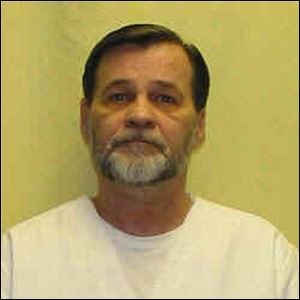
Condemned Ohio man claims innocence in arson death of 3-year-old son, asks governor for mercy
1/24/2012
Michael Webb
COLUMBUS, Ohio— A man scheduled to die next month for starting a fire that killed his 3-year-old son says new arson science backs up his claim of innocence.
Michael Webb is seeking mercy from the Ohio governor, saying a leading arson expert can prove the 1990 fire could have been set anywhere in the house, and not just near a closet or bathroom.
Webb's attorneys say the new theory on the location of the fire backs up a second argument on behalf of Webb, that an alternative suspect — whose identity was not disclosed to Webb's original lawyers — could have set the fire.
"In the years since the Webb fire, fire investigation science has advanced and the simple truth is that modern science now tells us that the point of origin of the fire could have been anywhere on the first floor," Webb's attorneys said in a filing with the Ohio Parole Board.
The board heard arguments from both sides Tuesday and will make its recommendation next week to Gov. John Kasich, who has the final say.
Prosecutors say Webb tried to burn down his house in Goshen Township in Clermont County to kill his wife and children to collect insurance money and to be with his mistress. Webb's son, Mikey, died of smoke inhalation.
Prosecutors say Webb hasn't introduced anything that federal courts didn't review and reject almost a decade ago.
Webb is making "a contention of innocence that is refuted by the hard evidence in the case," Clermont County prosecutors said in their filing with the parole board.
At the heart of the state's evidence against Webb was testimony from the Goshen Township Fire Chief Virgil Murphy that evidence from the fire on Nov. 21, 1990, showed it could only have been set near a bathroom or closet, based on where the majority of the fire damage was. Webb told investigators he was standing outside the bathroom.
Webb's attorneys submitted an analysis by Austin, Texas-based arson expert Gerald Hurst that said the fire chief relied on methods that 20 years of arson science have deemed unreliable.
Hurst said it's impossible to say in a fire where gasoline is spread through a house where the blaze began.
"Thus, we now know, to a scientific certainty, that it is impossible to determine in this case where the gasoline vapors ignited," Webb's attorneys said in their filings to the parole board.
The state says that all Hurst's analysis proves is the fire could have been set anywhere in the house, not that it eliminates the site near the bathroom as the origin.
Webb's attorneys concede this point, saying the report does not exonerate their client.
Webb's attorneys say police failed to follow up properly on reports that a boyfriend of one of the daughters might be responsible, and that he later boasted about responsibility for the fire and had a jacket that smelled of gasoline.
Prosecutors say the police investigation disproved the claim of a boast, and couldn't verify a witness' claim that the boyfriend's jacket smelled of gasoline. Webb's attorneys point out police never located the jacket.
Hurst's conclusions about the unreliability of previous arson investigations are backed up by a major shift in fire analysis that began in the early 1990s.
That's when older conclusions always taken as fact— that fires started with accelerants burn hotter than "normal" fires, for example — were challenged by leading national arson investigators.
The case for the scientific study of arson got a boost in 1992, with the publication of a guide to fire investigations by the National Fire Protection Association that called the older methods into question.
Hurst also authored a Feb. 13, 2004 report that challenged conclusions by the Texas State Fire Marshal's Office that death row inmate Todd Willingham set an arson fire that killed his three daughters.
The fire marshal's office stood by its findings and Willingham was executed Feb. 17, 2004.
Arson experts hired by a Texas forensic commission determined the evidence used to gain Willingham's conviction did not meet scientific standards and the fire was most likely accidental.
But in July the state's attorney general limited the commission's ability to investigate past cases, effectively ending the inquiry into the Willingham case.